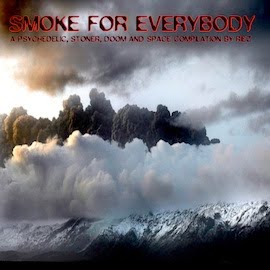Today it is 50 years ago that Buddy Holly dies in a planecrash. Buddy Holly was one of the first Rock 'n' Roll pioneers.

"Buddy Holly played rock and roll for only two short years, but the wealth of material he recorded in that time made a major and lasting impact on popular music. Holly was an innovator who wrote his own material and was among the first to exploit such advanced studio techniques as double-tracking. He pioneered and popularized the now-standard rock-band lineup of two guitars, bass and drums. In his final months, he even began experimenting with orchestration. Holly’s catalog of songs includes such standards of the rock and roll canon as “Rave On,” “Peggy Sue,” “That’ll Be the Day,” Oh Boy!” and “Maybe Baby.” Though Holly lacked the arresting sexuality of Elvis Presley, he nonetheless cut an engaging, charismatic figure with his trademark horn-rimmed glasses and vocal hiccup. His creative self-reliance and energetic, inspired craftsmanship prefigured the coming wave of rock and rollers in the Sixties. Holly was a professed influence on the Beatles and Hollies (both of whom derived their names from his). Even the Rolling Stones had their first major British hit with Holly’s “Not Fade Away.”
He was born Charles Hardin Holley (later amended to “Holly") on September 7th, 1936, in Lubbock, Texas. He learned to play guitar, piano and fiddle at an early age. After high school, he formed the Western and Bop Band, a country-oriented act that performed regularly on a Lubbock radio station and opened for acts that came through town. After being noticed by a talent scout, Holly was signed to Decca in early 1956, recording demos and singles for the label in Nashville under the name Buddy Holly and the Three Tunes. Back home, Holly opened a show at the Lubbock Youth Center for Elvis Presley, an event that hastened his conversion from country and western to rock and roll. ("We owe it all to Elvis,” he later said).
On February 25th, 1957, Holly and a revised band lineup, now dubbed the Crickets, recorded “That’ll Be the Day” at the Clovis, New Mexico, studio of producer Norman Petty. The effortless, upbeat rocker won them a contract with the Coral and Brunswick labels. Later that year it became a Number One pop hit and even rose to Number Two on the R&B charts. The terms of Holly’s arrangement with his record labels, negotiated by producer/manager Petty, were somewhat unusual. Releases alternated on Coral and Brunswick, with those on the former label credited to Buddy Holly and the latter to the Crickets. Between August 1957 and August 1958, Holly and the Crickets charted seven Top Forty singles.
In October 1958, Holly split both with the Crickets and with Petty, moving to Greenwich Village and marrying Maria Elena Santiago, to whom he proposed on their first date. Because of legal and financial problems engendered by his breakup with Petty, Holly reluctantly agreed to perform on the Winter Dance Party, an ill-advised bus tour of the Midwest in the winter of 1959. Following a show in Clear Lake, Iowa, Holly chartered a private plane to the next stop on the tour, Moorhead, Minnesota. Two other performers, Ritchie Valens and the Big Bopper, joined him. Their plane left the Mason City, Iowa, airport at one in the morning and crashed in a cornfield a few minutes later, killing all aboard. Buddy Holly was only 22 years old at the time of the crash.
(From rockhall.com)

Buddy Holly And The Crickets - The Very Best Of
 Elephant moon 2008
Elephant moon 2008 Elephant moon 2008
Elephant moon 2008


















































